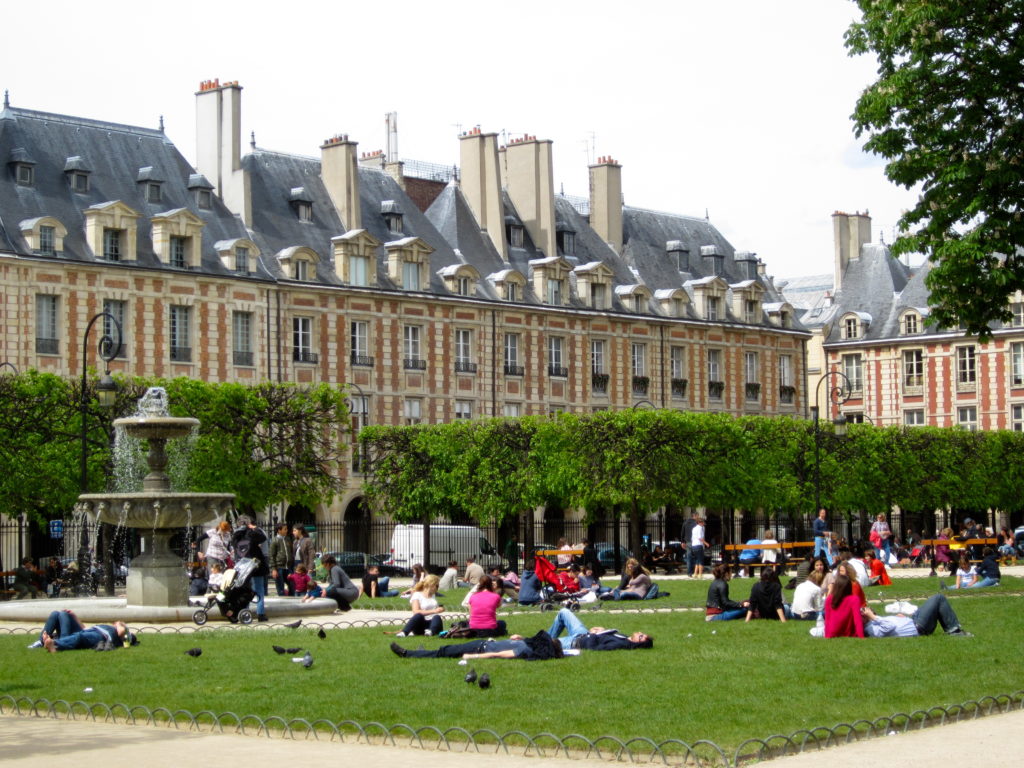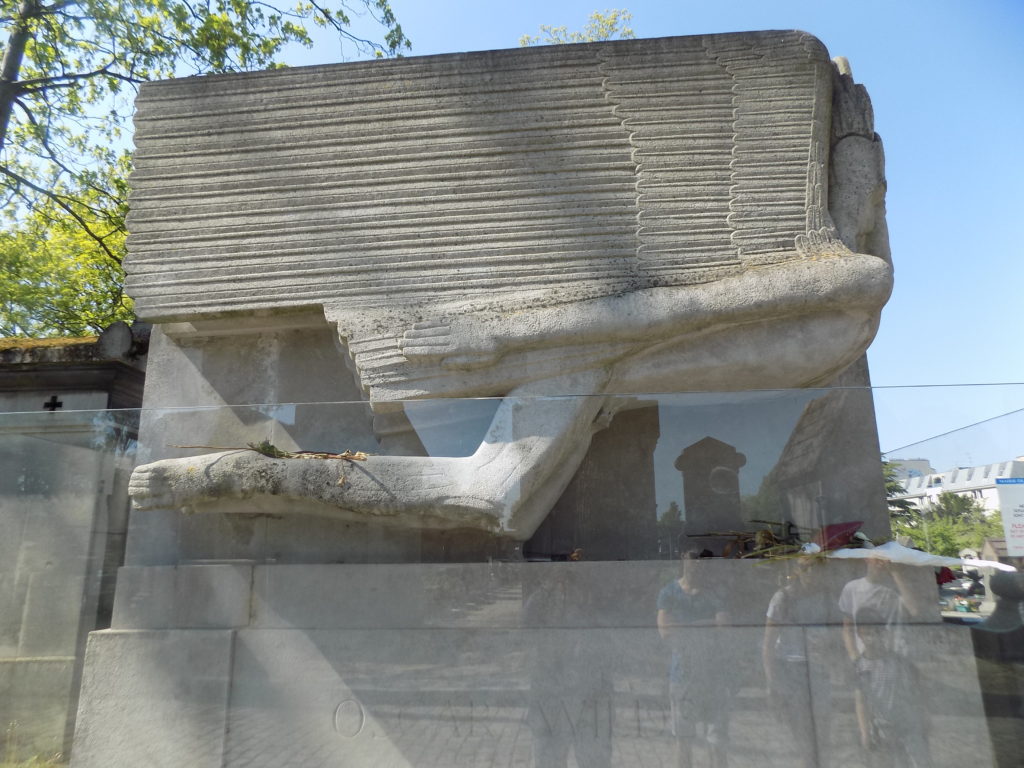Unlike the earliest entries in this series such as those for Montreal and Atlanta, I’ve written about my more recent visits to Olympic host cities elsewhere in this blog and that’s the case for Paris – the penultimate city for this category. Condensing my personal experiences on those trips for this category has been, at times, moderately challenging. For Paris, the task is daunting for two main reasons. First, I spent more time in Paris than in any of the other cities and second, with my various digressions the total of my Paris recaps exceeds 55,000 words or about 125 pages in book form. Read away if you’d like. Even as I write this introductory paragraph, I remain uncertain how I will edit those days into a brief summary (or even two) of fewer than 1,500 words each. Nevertheless, I shall try.
The Paris I didn’t see.
At the end of the show Stop the World: I Want to Get Off, Little Chap sings, “What kind of fool am I?”
Now, Little Chap is lamenting his addiction to lust rather than love but the question that opens the song could well apply to my visit to Paris. If you’re wondering why, I can provide the answer in eight words including the articles and conjunction: The Eiffel Tower, the Louvre, and Sacré-Coeur. Paris is a city of many icons and these are undoubtedly three. The thing is, that while I saw each of them from the outside, I entered none. It certainly would be reasonable to think, what kind of fool goes to Paris and doesn’t visit the Louvre? This kind.
Some of Paris I did see.
My stay in Paris started as part of a group and ended with my good traveling companion Patricia. The group spent two nights and one full day and one half day in Paris before setting sail along the Seine to Normandy and back. Patricia and I had five additional days in the cité de boue that became the ville des lumières.
On that first day we had a group orientation tour that included the Cathedral of Notre Dame (fortunately several years before the devastating fire) and a visit to the American Church in Paris. Pat and I joined Fred Childs – one of the tour leaders – for dinner at a night club where we saw a jazz combo led by guitarist Saul Rubin. Afterward, she and I took a trip to the top of the Arc de Triomphe where we had a chilly but spectacular view of the Eiffel Tower light show.

On the morning of the next day, we visited the Musée d’Orsay home to one of the world’s great collections of Impressionist art before setting sail.
Highlights from our return.
On our first day back from our cruise, Patricia and I did little but walk around le Marais – the neighborhood where we’d rented a flat – and across to the rive gauche (left bank) where we had a light lunch, stopped in the famous bookstore Shakespeare and Company, and wandered a bit more before returning to our flat for a rest. We had a lovely dinner that night at a nearby bistro Le Temps des Cerises before calling it a night.
The Downie day – Le Marais.
Some months before we left for this trip, Patricia suggested I read Paris, Paris by David Downie. So impressed was I that I reached out to him by email and hired him to lead Pat and me on a walking tour of the Marais and of Père Lachaise Cemetery. The plan we laid out was to walk through Le Marais in the morning, take a break for lunch at a restaurant of David’s choosing, and finish the day at Père Lachaise. We were pleasantly surprised when the photographer Alison Harris – who happens to be married to David – joined us. (By day’s end, Patricia was thrilled that Alison accompanied us because David and I had engaged in a day long punfest. I’m happy to add that David and I still exchange occasional emails some four years after this trip.)
In my original post about this day I wrote, “If I were to attempt to recount in any depth the breadth of information that David and Alison provided, it would tax my memory far beyond its limited capacity and your patience far beyond the general stress I put on it with each of these posts.” Thus, the abridgement challenge continues.
We started on the Rue des Lions that led to the menagerie of Charles V, crossed briefly onto the Île Saint-Louis where David showed us the oldest building on the island, then crossed back into the Pletzl or Jewish Quarter. (Pletzl is a Yiddish word meaning “little place”.)
From there we walked to the residence of Pierre-Augustin Caron de Beaumarchais.

Beaumarchais was not only a fascinating character in his own right but he played in instrumental role in the American Revolutionary War. If you’re interested, I’ll suggest you read the two full posts I wrote starting with this one.
Our last stop before lunch was the place that David calls “the jewel of the district and the most alluring of Paris’ squares” – the Place des Vosges. At one time called le Place Royale, the Place des Vosges wasn’t always the trendy, gentrified space we see in the early 21st century. In his book, Downie wrote,
…the 1789-to-Second World War of Place des Vosges history is a chronicle of corrosive decline. Factories sprang up in courtyards. Pavilions were dismembered, their aristocratic interiors junked (luckily a few were preserved and remounted at the nearby Museé Carnavalet, Paris’s city history museum). If vast sums hadn’t been spent on the square in recent decades it probably would have collapsed.

The Downie day – Père Lachaise.
As I’ve frequently stated in this blog, I enjoy visiting cemeteries and there may be no more famous cemetery in Europe than Le Cimetière de l’Est or, as it’s more widely known, Père Lachaise. (François d’Aix de la Chaise was confessor to King Louis XIV and convinced the King to purchase the property then known as Mount Louis to serve as a retreat for Paris’ Jesuit brothers and to build him a small château that became the priest’s home until his death in 1709. Ironically, Père Lachaise isn’t buried in the cemetery that bears his name. He is interred in the Church of Saint-Paul-Saint-Louis that is barely a block from the flat Pat and I rented.)
If your only interest in visiting a cemetery is to see the burial sites of famous people, Père Lachaise is a can’t miss spot. Here’s a partial alphabetical list of some names you might recognize: Pierre Abélard and Héloïse d’Argenteuil, Guillaume Apollinaire, Jean-Pierre Aumont, Honoré de Balzac, Pierre-Augustin Caron de Beaumarchais, Judah P Benjamin, Sarah Bernhardt, Georges Bizet, Gustave Caillebotte, Maria Callas, Claude Chabrol, Frédéric Chopin, Colette, Camille Corot, Eugène Delacroix, Paul Dukas, Isadora Duncan, Max Ernst, Jean de La Fontaine, Georges-Eugène Haussmann, Jean-Auguste Ingres, Édouard Lalo, Marcel Marceau, Georges Méliès, Amedeo Modigliani, Molière, Yves Montand, Jim Morrison, Max Ophüls, Édith Piaf, Camille Pissarro, Francis Poulenc, Marcel Proust, Jean Rollin, Edmond James de Rothschild, Gioachino Rossini, Simone Signoret, Gertrude Stein, Alice B Toklas, Oscar Wilde, and Richard Wright.
Entering from the east, the first famous person’s grave we saw belonged to Oscar Wilde.

(The plexiglass is to protect it from graffiti.) As with le Marais, David knows the cemetery quite well, as it was “about 150 yards as the raven flies from the office I rented for twenty years which is why I became a Père-Lachaise habitué.” In addition to many of the famous graves, David pointed to many ancillary works of art that populate the cemetery once again adding great value to our visit.
Since I’m approaching the word count limit I’ve established and only touched upon the first day, I’ll have to write another post about my time in Paris. Meanwhile, if you’re new to this site, you might want to read my biographical posts about six people interred in Père-Lachaise who aren’t on the list above but whose lives are fascinating nevertheless. I would urge you to at least read the utterly fascinating story of Abélard and Héloïse that begins here if you’re unfamiliar with that tale. (Scroll to the section headed “An Innocent Abroad”.)